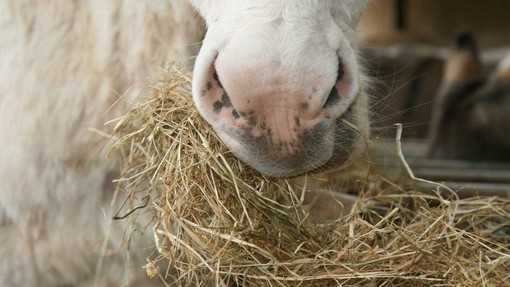Managing weight loss
Donkeys should be weighed and condition scored regularly to monitor weight loss/gain. Download our Donkey Weight Estimator chart and Donkey Body Condition Score Chart to assess your donkeys weight and body condition from our factsheet Monitoring your donkeys weight.
Things you should do
- Good quality, clean feeding straw should make up the majority of the donkey’s diet.
- Barley straw is best but wheat straw can also be fed, if the donkey has poor teeth feed low calorie short chopped chaff products in place of straw.
- Supplement straw with a low calorie forage balancer to provide vitamins and minerals.
- Encourage owners to feed ‘little and often’ to ensure donkeys are trickle feeding as they would in the wild; if possible encourage ad lib feeding.
- Assess grazing management, and consider restricting the amount of grass that is available either by strip grazing or creating a track system as donkeys will gain weight easily if allowed unrestricted access to grass; with the provision of feeding straw at all times, bare paddocks, sand schools or bark chipped exercise areas may be more appropriate.
- Think about the location of feeders, water, and shelter to encourage maximum movement throughout the day and if possible ridden, driven or in hand exercise.
- Body condition score and take heart girth measurements monthly and use The Donkey Sanctuary weight estimator to calculate weight and monitor weight loss.
Things you should avoid
- Don’t starve the overweight donkey as this may cause unnecessary stress and lead to the development of hyperlipaemia.
- Avoid cereal grain based feeds, as they are too high in starch and sugar and will encourage weight gain as well as being implicated in the onset of gastric ulcers and laminitis.
- Check your feeding and bedding straw for retained grain.
- Don’t feed sugary treats, if treats are needed for training then choose a high fibre nut, and provide non-feed boredom breakers such as horse toys, old wellies, and ash, beech or hazel logs.
- Don’t expect results overnight, weight loss should be gradual at not more than 5kg a month for the average sized donkey.
Possible diets that can be used
- Good quality straw, bought from a trusted supplier should be the first option. Barley straw is most suitable for donkeys, but wheat straw may be suitable if the donkey has good teeth, oat straw is higher in calories so would need to be fed in smaller quantities.
- If straw is unavailable haylage such as High Fibre or Timothy Horsehage may be fed in limited quantities, don’t confuse this with farmer’s haylage which can be extremely variable in energy and sugar levels.
- Donkeys with poor teeth could be fed a short chopped chaff product such as TopChop Zero in place of straw, provide 2 to 3 kg per day to satisfy appetite for an average donkey.
- Add a feed balancer for a straw only diet e.g. Top Spec Donkey Forage Balancer fed at 100g per 100 kg bodyweight per day.




